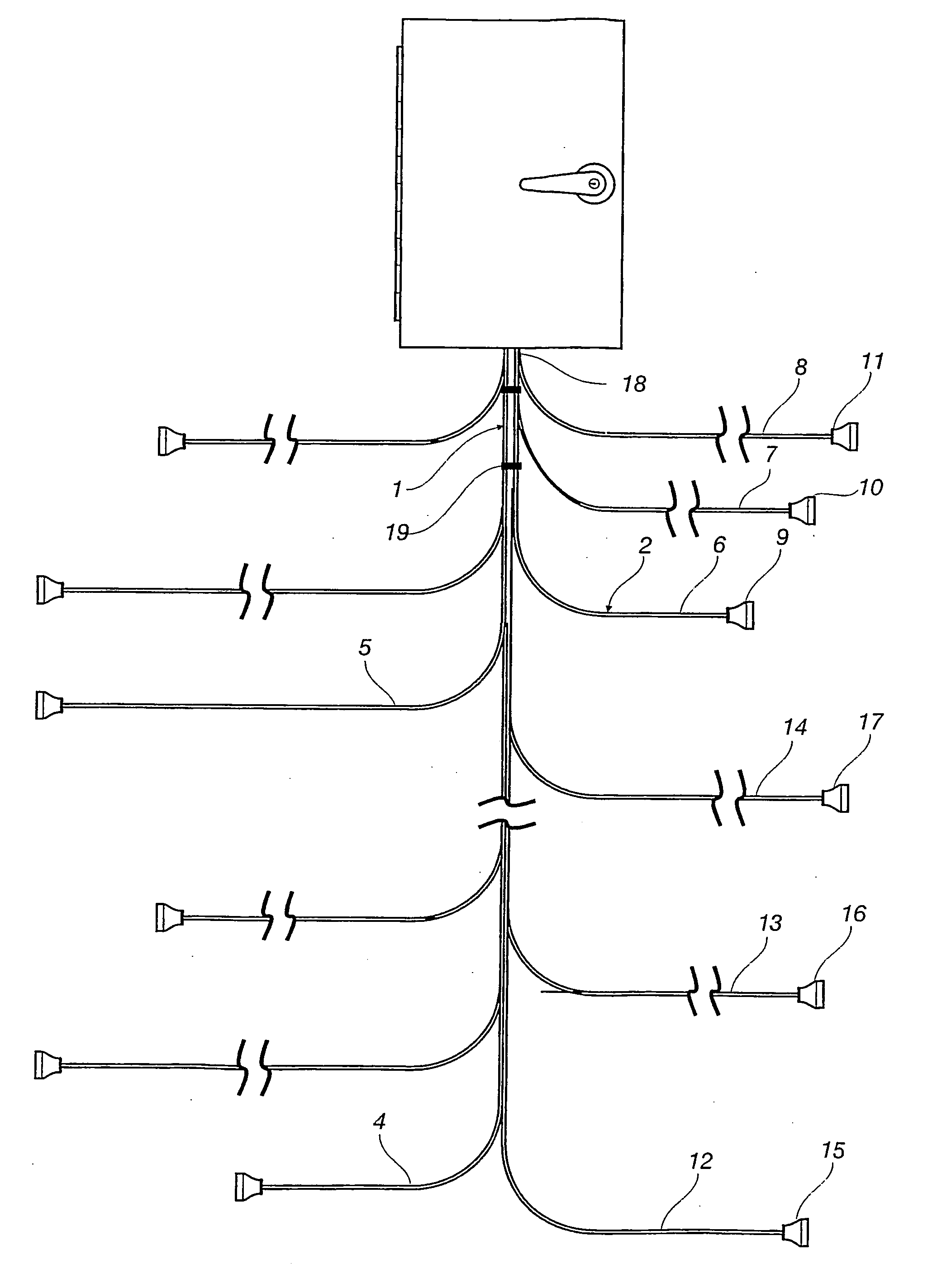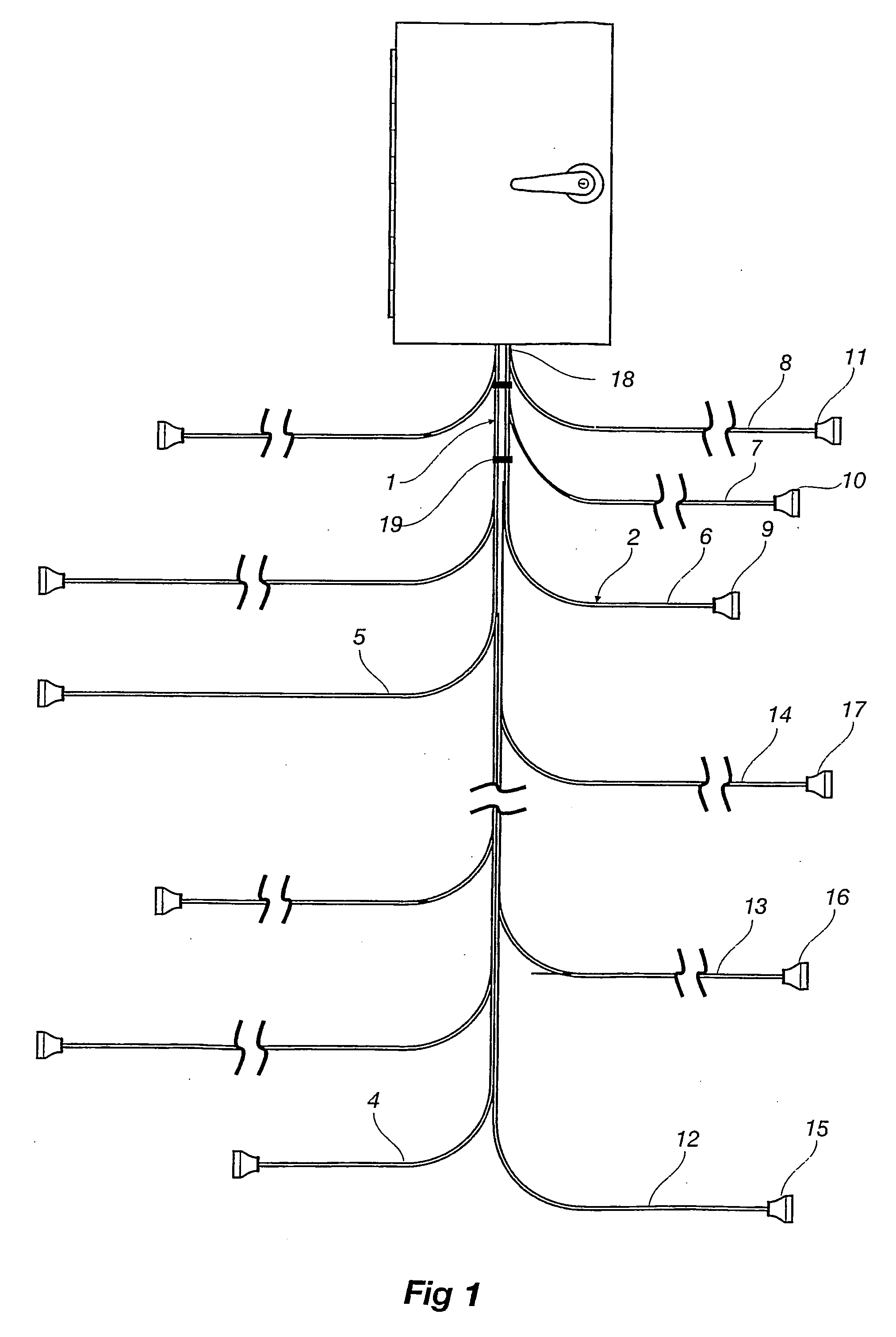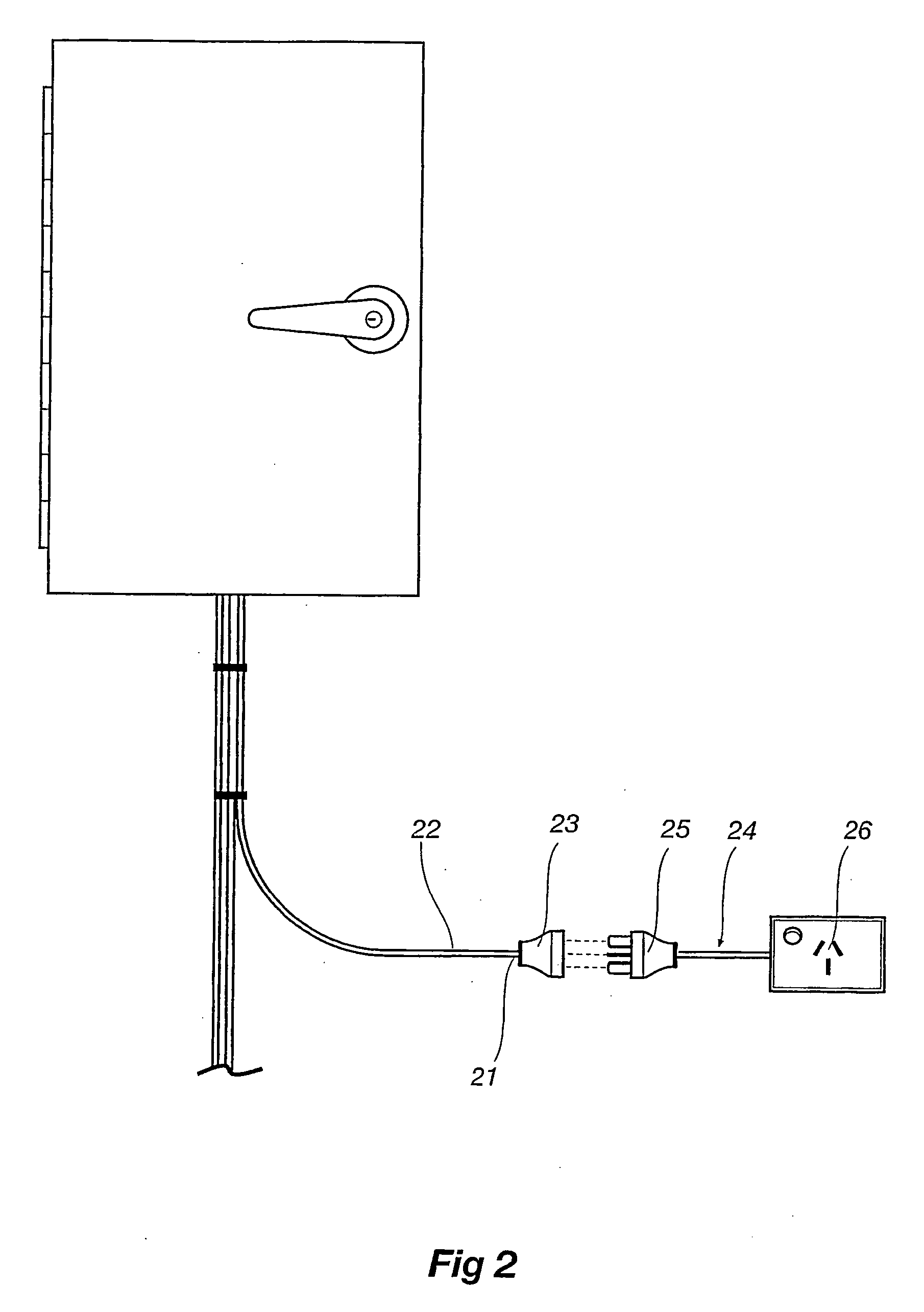Electrical wiring for buildings
a technology for electrical wiring and buildings, applied in the direction of insulated cables, cable junctions, capacitors, etc., can solve the problems of affecting the quality of electrical wiring, and affecting the safety of electrical wiring, etc., and achieves the effects of low cost, high quality control in the factory environment, and very economical manufacturing
- Summary
- Abstract
- Description
- Claims
- Application Information
AI Technical Summary
Benefits of technology
Problems solved by technology
Method used
Image
Examples
Embodiment Construction
[0040] Now referring to the drawings the assembly 1 is manufactured as a loom which includes in this case four separate cables 2, 3, 4, 5, each of which have three cores each which are each electrically insulated one from the other and which are held together so as to be kept in an adjacent alignment, and each of which are separately coloured in a traditional way in which earth, active and neutral cores are traditionally coloured with conventional mains electrical power wiring.
[0041] Each of these four cables are arranged in turn give rise to a plurality of branches stemming there from, each branch terminating at a female socket which is to say where the electrical connectors are embedded with the socket and it is there fore adapted to receive a male plug which has pins intended to enter into the female socket which are otherwise inaccessible and makes electrical connection thereby.
[0042] In this case cable 2 has branches 6, 7, 8 terminating at sockets 9, 10, 11 respectively. Simi...
PUM
 Login to View More
Login to View More Abstract
Description
Claims
Application Information
 Login to View More
Login to View More - R&D
- Intellectual Property
- Life Sciences
- Materials
- Tech Scout
- Unparalleled Data Quality
- Higher Quality Content
- 60% Fewer Hallucinations
Browse by: Latest US Patents, China's latest patents, Technical Efficacy Thesaurus, Application Domain, Technology Topic, Popular Technical Reports.
© 2025 PatSnap. All rights reserved.Legal|Privacy policy|Modern Slavery Act Transparency Statement|Sitemap|About US| Contact US: help@patsnap.com



